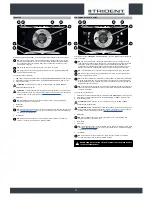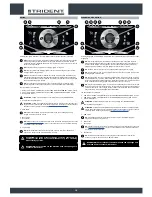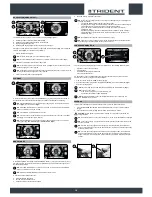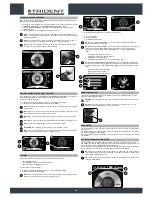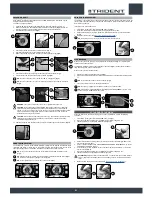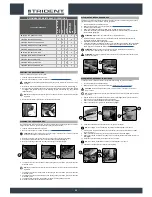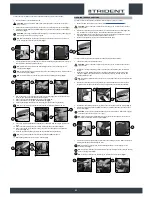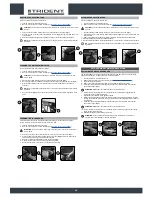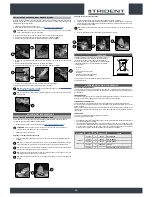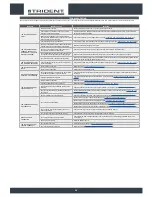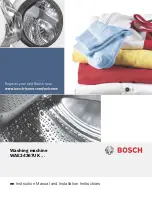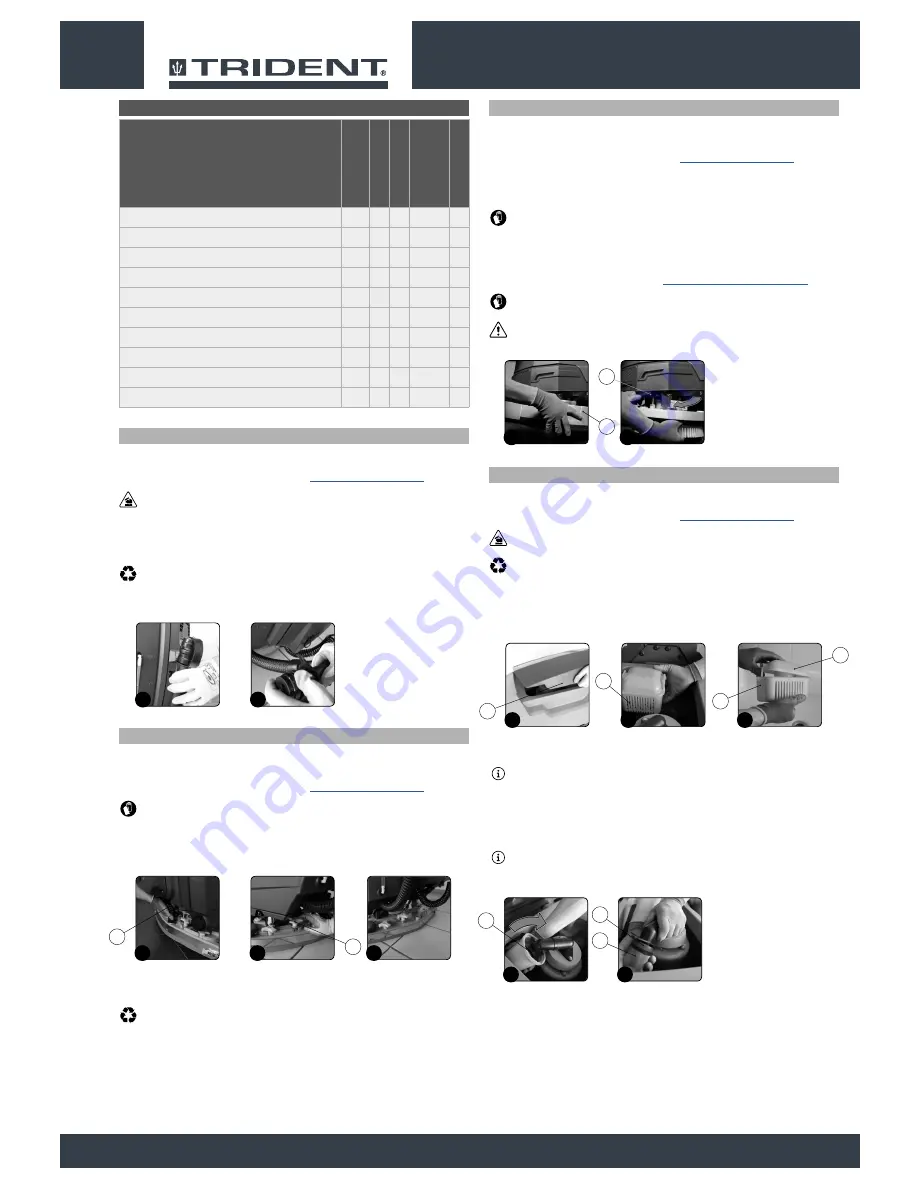
EMPTYING THE RECOVERY TANK
Proceed as follows to empty the recovery tank:
1. Take the machine to the maintenance area.
2. Make sure the machine is in a safe condition (see “
MACHINE SAFETY MEASURES
”).
CAUTION
: users are advised to always wear protective gloves, to avoid the risk of serious injury
to hands.
3. Release the recovery tank drainage tube (on the back of the machine) from the retainers (
Fig.1
).
4. Bend the end of the drainage tube in order to create a choke and prevent the content from coming
out (
Fig.2
), then position the tube on the discharge surface, unscrew the cap, and gradually
release the tube.
NB
: the place designated for this operation must comply with current environmental protection
regulations.
5. Repeat the operations in reverse order to reassemble all the parts.
CLEANING THE SQUEEGEE BODY
The careful cleaning of the whole vacuum unit ensures better drying and cleaning of the floor as well as
a longer vacuum motor life. To clean the squeegee body, proceed as follows:
1. Take the machine to the maintenance area.
2. Make sure the machine is in a safe condition (see “
MACHINE SAFETY MEASURES
”).
CAUTION
: these operations must be carried out using protective gloves to avoid any possible
contact with the edges or tips of metal objects.
3. Remove the vacuum tube (1) from the vacuum nozzle on the squeegee body (
Fig.1
).
4. Completely unscrew the knobs (2) in the squeegee body pre-assembly (
Fig.2
).
5. Remove the squeegee body from the slits in the squeegee connector (
Fig.3
).
6.
Thoroughly clean the vacuum chamber of the squeegee body, first with a jet of water and then
with a damp cloth.
NB
: the place designated for this operation must comply with current environmental protection
regulations.
7.
Thoroughly clean the rear rubber blade of the squeegee body, first with a jet of water and then
with a damp cloth.
8.
Thoroughly clean the front rubber blade of the squeegee body, first with a jet of water and then
with a damp cloth.
9.
Thoroughly clean the vacuum nozzle with a jet of water, and then with a damp cloth.
10. Proceed in reverse order to reassemble all the parts.
CLEANING THE BRUSH HEAD BRUSH
Careful cleaning of the brush guarantees better cleaning of the floor, as well as a longer brush head
gearmotor lifespan. To clean the brush, proceed as follows:
1. Take the machine to the maintenance area.
2. Make sure the machine is in a safe condition (see “
MACHINE SAFETY MEASURES
”).
3. Go to the front of the machine.
4. Remove the splash guard carters (1) (
Fig.1
) and lay them carefully on the ground.
5. Press the brush-holder plate retainer (2) and simultaneously rotate the brush (3) in the direction
shown in the image (
Fig.2
).
ATTENTION
:
Fig.2
shows the rotation direction of the left-hand brush.
6. When brush rotation is prevented, turn until the button on the brush is disengaged from the
coupling spring on the brush-holder plate.
7. Repeat the same operation for the right-hand brush.
8. Clean the brush under running water to remove any impurities from its bristles. Check the bristles
are not worn; in the event of excessive wear, replace the brush (the bristles should be at least
10mm long). When replacing the brush, read "
REPLACING THE BRUSH HEAD BRUSH
".
ATTENTION
: these operations must be carried out using protective gloves to avoid any
possible contact with the edges or tips of metal objects.
ATTENTION
: the place designated for this operation must comply with current environmental
protection regulations.
CLEANING THE RECOVERY TANK FILTERS
To clean the recovery tank filters (without the optional tank cleaning kit), proceed as follows:
1. Take the machine to the maintenance area.
2. Make sure the machine is in a safe condition (see “
MACHINE SAFETY MEASURES
”).
CAUTION
: users are advised to always wear protective gloves, to avoid the risk of serious
injury to hands.
NB
: the place designated for this operation must comply with current environmental protection
regulations.
3. Grip the handle (1) on the left-hand side of the recovery tank (
Fig.1
) and turn the tank cover as
far as it will go, until it reaches the maintenance position.
4.
Remove the dirty water basket/filter (2) from the support (
Fig.2
).
5.
Remove the basket cover (3) from the basket/filter (2) (
Fig.3
).
6.
Clean the basket/filter (2) and the basket cover (3) under a jet of water.
NB
: use a spatula or brush to eliminate any dirt that is particularly difficult to remove.
7.
Use a dry cloth to dry the basket/filter (2) and the basket cover (3) and place them back inside
the recovery tank.
8.
Remove the filter protection cup (4), turning it in the direction of the arrow (
Fig.4
).
9.
Remove the vacuum motor filter (5), taking care not to lose the support tie (6) inside the recovery
tank (
Fig.5
).
10.
Rinse the cup (4) and filter (5) thoroughly under running water.
NB
: use a spatula to eliminate any dirt that is particularly difficult to remove.
11.
Repeat the operations in reverse order to refit everything.
22
2
1
2
1
3
1
2
2
3
1
1
2
2
3
5
4
4
5
6
2
1
1
2
RECOMMENDED MAINTENANCE OPERATIONS
TYPE OF MAINTENANCE
AT THE END OF THE WORK
DAIL
Y
WEEKL
Y
BEFORE A
LONG
PERIOD OF NON- USE
TRANSPORT
EMPTYING THE RECOVERY TANK
X
X
X
CLEANING THE SQUEEGEE BODY
X
X
X
CLEANING THE BRUSH HEAD BRUSH
X
X
CLEANING THE RECOVERY TANK FILTERS
X
X
CLEANING THE RECOVERY TANK
X
X
EMPTYING THE SOLUTION TANK
X
X
X
CLEANING THE WATER SYSTEM FILTER
X
X
CLEANING THE VACUUM TUBE
X
X
CLEANING THE SOLUTION TANK
X
X
CLEANING THE VACUUM WAND KIT
X
X










